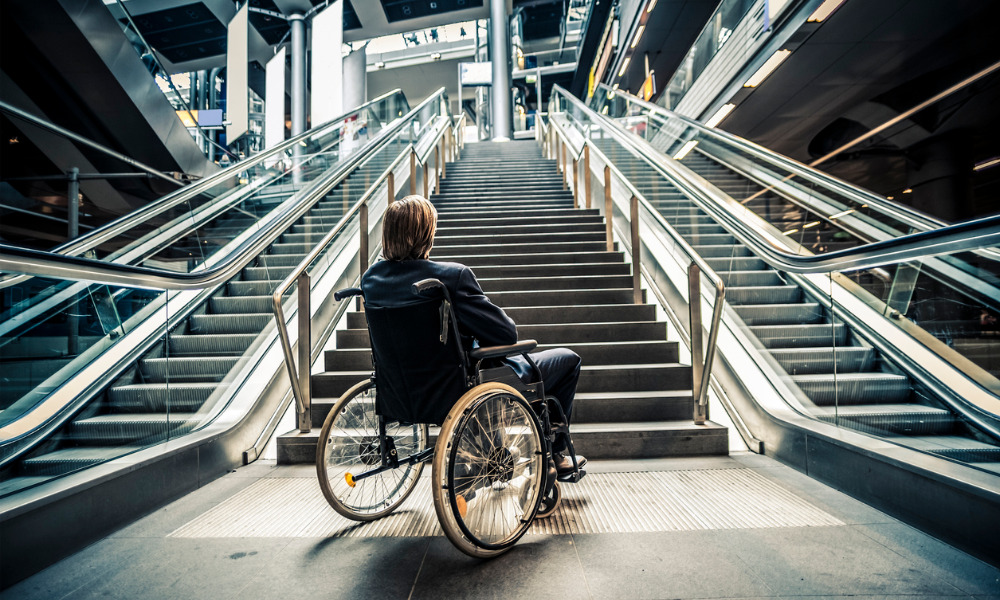27 per cent of people with disabilities still feel excluded in the workplace

Each year, a swell of advocates – from journalists, officials, to business experts – gather and evaluate the role and status of disabled workers both on the market and within the workforce. Unemployment rates or “gaps” in the labour market are often identified and these are used to suggest that the workplace isn’t as welcoming to those with disabilities.
According to research from Accenture, 27 per cent of people with disabilities still feel excluded in the workplace. One of the key priorities among HR departments this year has been captured by the acronym DEI –diversity, inclusion, and equity. Increasingly, more companies realize the importance of creating diverse and fair work environments. This has become especially important as disabled employees transition back into the office environment after months of working remotely. But how can your business achieve this?
Identifying barriers
It can be tricky to pinpoint the barriers that make your work setting seem non-inclusive. The trouble with unaddressed issues, here, is how an unwelcoming workplace can harm productivity of different employment mixes. Learning to identify the signs of inclusion and equality and then creating a workplace that supports and delivers goals for diversity can be more challenging than it sounds.
Other barriers can be invisible, or unintentional, and these are often the ones that hold back the progress of employees. From communication to inclusive employee events, and everything in-between, the executive decisions that shape your workforce should consider the full mix of employees that enjoys its culture. Therefore, fostering meaningful change that develops a working environment for the better is all about encouraging your talent to thrive (and removing any barriers in the process).
Communication styles
It’s important to understand that some disabilities are more visible than others – and, regardless, colleagues should be encouraged to communicate clearly and openly with one another. This is a tried and tested tenet of a highly functional and motivated workforce, and one that is truly inclusive.
It’s worth understanding that employees may have unique communication requirements – where it would become appropriate to make accommodations. Yet, there are always basics to strong communication. Whether between colleagues, teams, or managers and their staff, communication should focus on clarity and respect. This is where tone and the content of your message really matter. Communication, after all, drives a workforce.
Accommodate with resources
If accommodations can help support and nurture your talent, then consider investing in new resources that can help any disabled staff. This means ensuring you have access points to the office and adjustable or adaptable desks, office equipment and other articles of furniture. This will be especially important for those with wheelchairs who might even need access to charging points for their mobility devices.
Accommodations should be delivered to support the comfort and health of returning employees. More simply, this can be adaptive equipment found around the office. Alternatively, this might mean closer parking spaces to reduce travel distances or building an office that’s friendly toward motorised wheelchairs.
It’s a good idea to reduce any spectacle for special accommodations and, instead, focus on quietly reassuring disabled employees that resources can be made available where it helps and supports their workplace productivity.
Narrow hallways can be just as disruptive as narrowmindedness. This means that managers need to develop their offices’ infrastructure – including access ramps and accessible workstations – as well as focus on cultural issues that might undermine the inclusivity, diversity, or equality of their office.
Build culture remotely
Adjustments may need to be made socially and technically. The kinds of help that managers can offer technically should start by understanding the needs of your disabled employees. Discussions about improvements should be led by the employee, rather than trying to anticipate problems with guesswork.
Whilst it’s important to reduce any discomfort or barriers that undermine productivity, it can seem misguided to simply downplay a disability. Rather, build a culture that welcomes differences between employees. Often these differences create opportunities for colleagues to connect, collaborate and learn from one another.
Refocus on DEI and use ideas of diversity, inclusion, and equality as pillars for your business’ internal culture. Through empathy, understanding and greater openness managers are more likely to succeed in creating a welcoming office.
An easy oversight is to quickly dismiss plans to support remote working. Rather than abandon strategies for remote work, embrace flexibility. This could be as more adaptable working schedules, or decreased travel, for example. Those working remotely may need a gentle transition back into the office, especially after a year of health anxieties.
The bottom line
Offices were once a thriving hub of talent and hard work. Yet, the pandemic has only compounded the nerves of those employees who have been working remotely and away from the workplace for a while.
The building-blocks for meaningful change start with our willingness to understand the differences between diversity, inclusion, and equality. Only then can managers build inclusive, diverse, and welcoming settings.
Written by Toby St. George, Director at Lith Tech Mobility, a British electric folding wheelchairs supplier.





